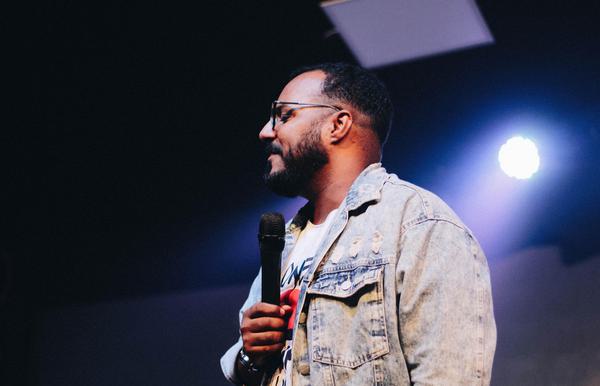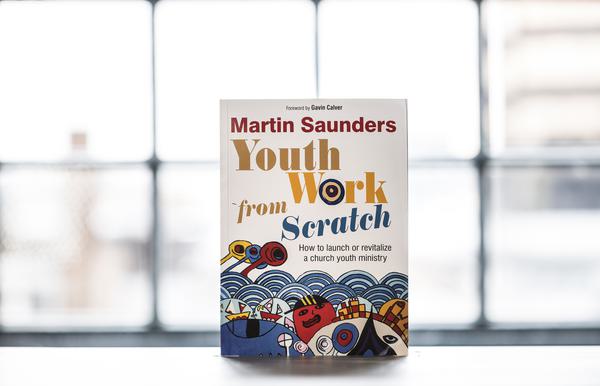Christian youth ministry is getting smaller, but that’s bringing surprising new opportunities for young people’s faith to grow – if youth workers are prepared to adapt.
The number of young people in churches is falling. It has been for decades but the speed of that decline has been increasing, and the lockdowns of the last two years have made matters even worse. In some churches that means youth groups have disappeared, but in many others it just means they’re smaller. The average size of a youth group is now about five young people. No one was counting when I was a teenager in the 1970s but I’ll bet that the average size back then was more like twenty.
When things get small, the rules change. That was Einstein’s big insight – when you’re working at a molecular level, the normal rules of gravity act differently. In youth group terms that’s true too – when you’re working with just five young people you have to approach things differently. The old rules of running a youth group don’t apply in the same way.
The challenge of a smaller group
Why? Well, there are practical differences. Those five young people are not all going to be the same age. One is twelve, one is fourteen, then there’s a fifteen-year-old and a seventeen-year-old. Oh, and there’s the ten-year-old who’s turned up because there’s no other group for them. Three of them are from the same family and are brothers and sisters. That means running the group is dependent on whether they’re away for the weekend or not – if they’ve headed off to visit grandparents, you’re left with just two – probably the ten-year-old and the seventeen-year-old!
At these sizes much of the typical way we approach youth work doesn’t fit anymore. Ready-to-use material and curriculums aren’t well suited for tiny numbers and a wide age range. When things are this small, personality differences, maturity, shyness, stages of faith – they all become amplified and can have a huge impact in a way that would not happen in the same way in a room of twenty teenagers. Counterintuitively, it can sometimes be harder for young people to share and participate when there are just a handful in the room – if you struggle with confidence you can feel more exposed. Having just five young people together doesn’t mean suddenly things become wonderfully deep and personal. Meeting together can end up more awkward as teenagers find themselves wishing they could melt into a crowd that doesn’t exist.
"I’m learning that, despite my longing for growth, there’s real depth and different opportunities when you’re just a handful."
But step back from the assumptions about what a youth group ‘is’ and you start to find opportunities and advantages in being small – if you’re prepared to think about youth work differently that is. That’s been my experience helping to run a monthly youth group at our small church for, yes, you guessed it, five young people. It’s meant unlearning some assumptions and approaches from years of running larger groups.
1. Change the dynamic
Start by changing the group dynamic. Imagine a group of friends meeting for coffee, not a typical programme-based youth group. Sit round a single table somewhere comfortable. Share food together. Make it much more informal. We’ve moved from the ‘youth room’ at church to the coffee area in the foyer. We sit together and have breakfast. There’s no neat starting point, it’s just unhurried conversation. If things dry up, we ask each other open questions that work whatever your age – our favourite is to ask about your high point and low point of the past week. That’s something you can talk about if you’re ten or seventeen. And did I mention food? I’m going to keep on about it. We have started to see eating together not as the warm-up to something, but at the heart of our time together. So everything is much more informal and open-ended. If a conversation has energy, we don’t shut it down because we have to get to the next bit of the prepared session.
2. What’s your role?
The different dynamic changes your role as well. In a large group of teenagers you’re the organiser, the peace-keeper, the teacher - you’re in charge. That’s true for small groups but it’s turned right down low and the time together feels much more shared equally between you. You have your hand at the tiller, to switch to a boating analogy, but you’re gently directly things where the wind is taking you. In the larger youth groups I ran twenty years ago, I decided what we’re doing and how long it would take. Things are much less directed in small groups, and all the better for it. Young people have more agency and the discussions are more open-ended. I’ve discovered it turns out that suits Gen Z just fine as a style of discipleship. The difference in ages can be beneficial too – young people are at different stages and so there’s a much wider ‘wisdom’ in the room. You find the seventeen-year-old has some great advice and insight for those in their early teens. You don’t get that when your youth group’s so big that you have to split it into different ages, and the seventeen-year-old and the eleven-year-old never meet!
3. New ways to worship
Smaller groups can find it hard to have times of worship and prayer – partly because the dynamics can mean it feels awkward. This is one of the ways working with young people can be different to running a home group of adults in a church. Small groups have been around for decades but it’s different for teenagers. We’ve found it’s easiest to use liturgy – yes, I know! – often something we’ve written ourselves or pinched from the internet. We mark the moment we move into worship and prayer by lighting a candle on the table. It’s a simple ritual but it helps everyone know that we’re moving into something different. We don’t sing – it just wouldn’t work with five. Liturgy helps because there’s certainty in what you’re being asked to say, and you feel less self-conscious. It’s these kinds of things that you have to adapt to when youth groups are this small.
Not that we want to stay small. We want to grow. But again, that can be tricky. I was easily embarrassed as a teenager, and many young people are self-conscious for different reasons. Joining a small group can actually feel more intimidating than slipping into something that’s bigger and noisier where you won’t be noticed. So, for that we’re planning to link up with some other small groups in the area and have a shared session. These are spaces where it’s much more natural to invite friends along.
It's early days for us – we only started our small group in January – and I’m realising there’s a lot to learn about working with small numbers of young people. The reality is this is where much of youth ministry is right now. But I’m learning that, despite my longing for growth, there’s real depth and different opportunities when you’re just a handful. I wish there were more ideas and resources on hand to work in this kind of context: Youthscape is going to be working on that in the next few years. In the meantime, I have to hope the Alexanders aren’t away next Sunday – we’re down to two again if they are!












